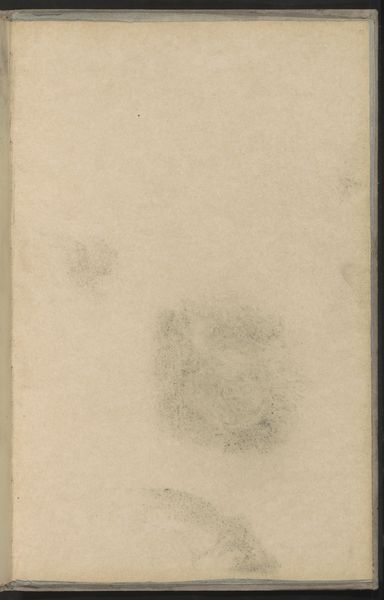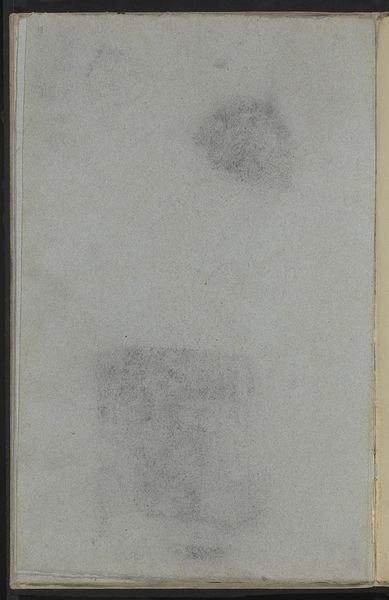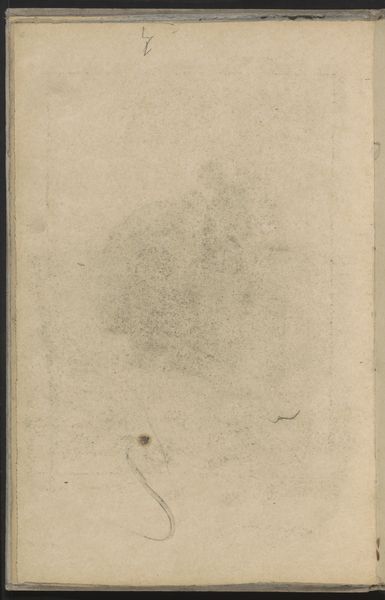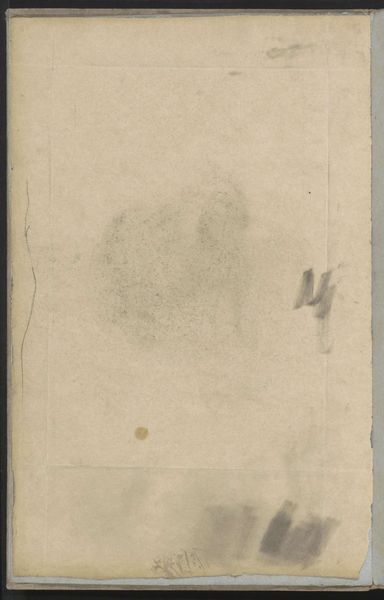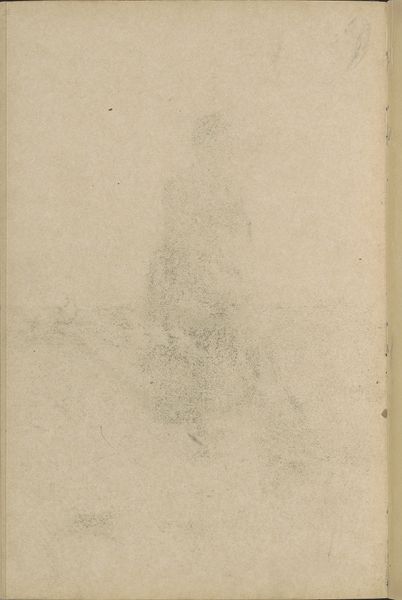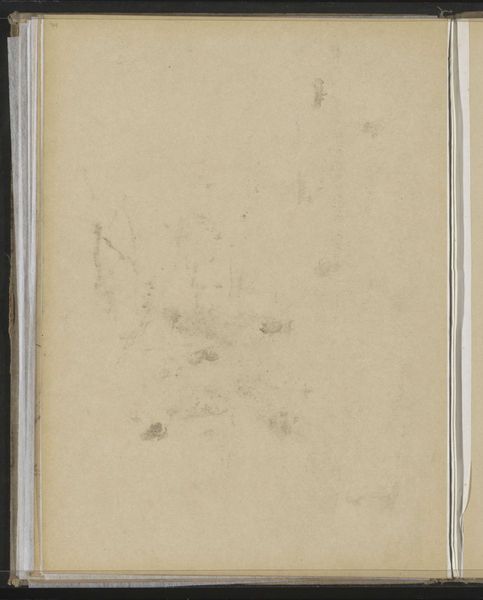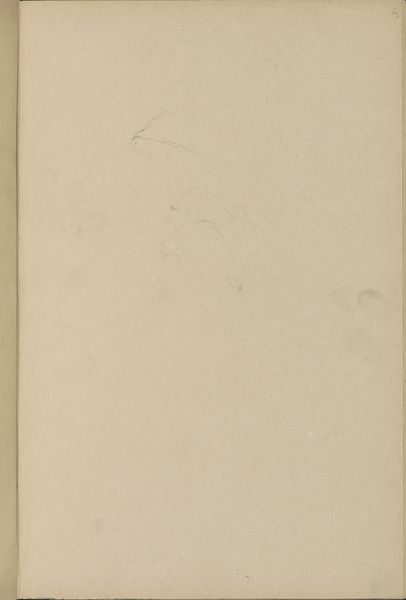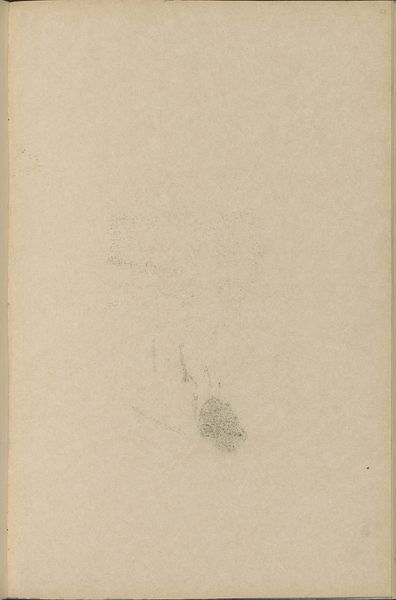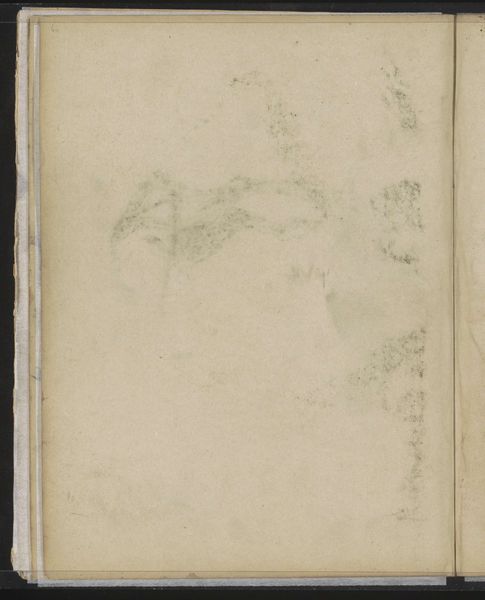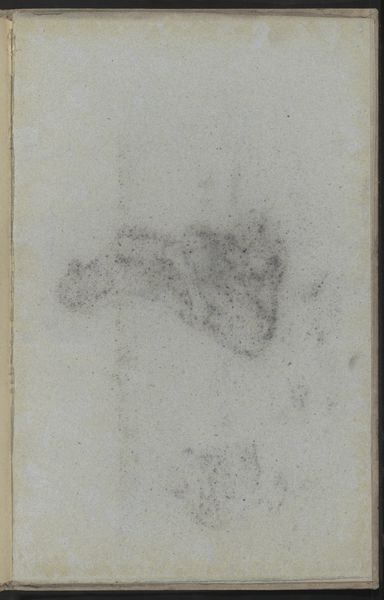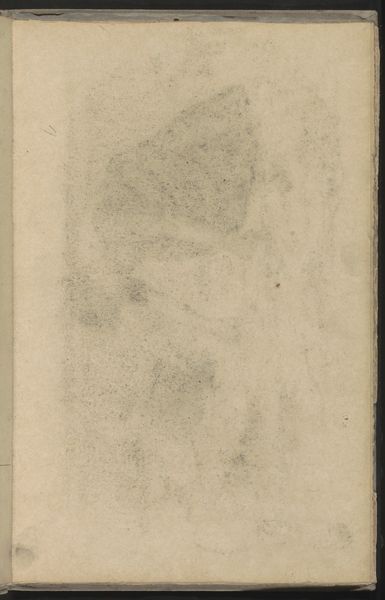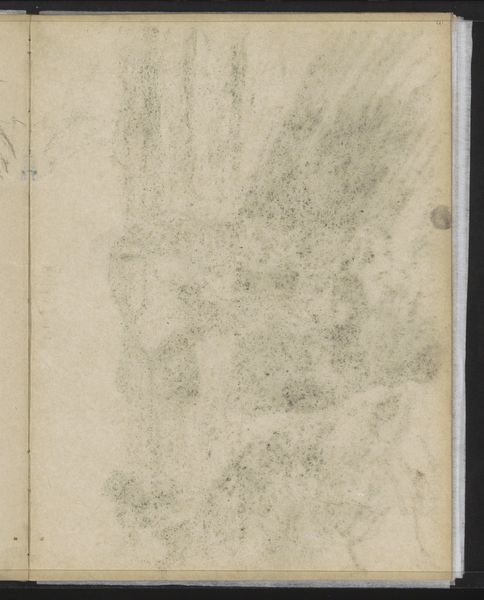
Copyright: Rijks Museum: Open Domain
Curator: Here at the Rijksmuseum, we're looking at "Abklatsch van tekeningen" which translates to "Rubbing of drawings." It's by Willem Witsen, created circa 1884 to 1887. Editor: My first impression is one of fragility. The drawings seem almost spectral, like faded memories barely clinging to the page. Curator: Precisely. The work involves transfer techniques; Witsen created an image on one sheet and then pressed it onto another, resulting in this delicate, almost ghostly impression. This particular technique can reveal not only the images, but also their change throughout history. Editor: Tell me more. There is something evocative, in the same manner that faded family photos elicit a distant remembrance. What symbols recur? How would people interpret these shapes at the time? Curator: It provides insight into the artistic process itself, allowing for spontaneity and the acceptance of chance effects. Artists working around this time, like Degas with his monotypes, also found ways to combine and disseminate ideas using similar transfer methods. So, what symbols may resonate are often up to each viewer. I suppose many would recognize those figures, however dimly realized. Editor: You see familiar forms in the shapes? The form on the bottom-right is immediately legible. If this were circulated amongst a specific artistic group or family, its meaning may not be general. To me, it conveys the ephemerality of artistic labor itself—a trace, a residue. Curator: I agree. And within the social and artistic milieu of Witsen, the emphasis might be less on clear representation and more on conveying a mood, an atmosphere through this veiled method. It captures a sense of the fleeting, much like a memory fading over time. Editor: It's a striking juxtaposition—the artistic intention and what’s produced. How the societal value of imagery evolved through reproduction technology is what resonates. So, we start by perceiving "Abklatsch van tekeningen" as merely faint sketches, but then recognize it evokes a feeling. It gives a unique perspective of artistic interpretation within culture. Curator: Absolutely. Its quiet presence makes one contemplate not only the hand of the artist, but how society interprets it.
Comments
No comments
Be the first to comment and join the conversation on the ultimate creative platform.
